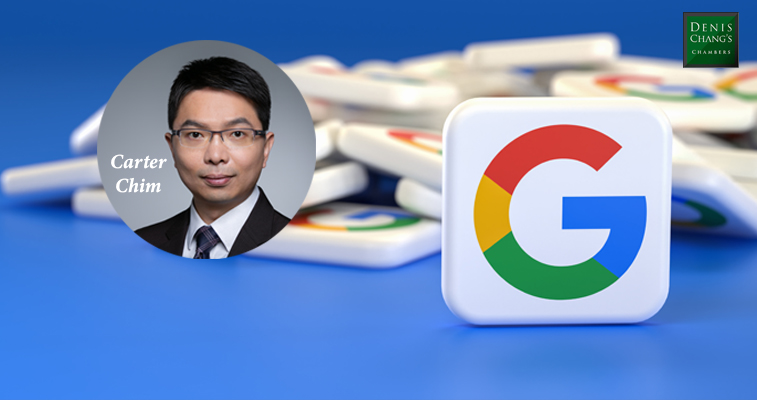
A Search Beyond Challenge? Takeaways from the European General Court’s ruling in the Google Android antitrust appeal
Smartphone manufacturers which use Google’s Android operating system are bound by several conditions, including the requirement to pre-install the entire ecosystem of Google’s applications (including Google Play Store and Google Search) — or none at all — onto their smartphones. The European Commission found that, among others, Google abused its dominant position on each national market for general search services and increased barriers to entry by tying the Google Search app with the Play Store.
On 14 September 2022, the European General Court (“GC”) handed down its eagerly anticipated judgment in Google’s appeal against the European Commission’s ruling: Case T-604/18 Google and Alphabet v Commission. Finding in favour of the European Commission on all but one ground of appeal, the GC reduced the fine imposed on Google from a record-breaking €4.34 billion to a (still record-breaking) €4.13 billion. Carter Chim examines the implications of this controversial decision.

The Facts
By way of background, Android is an open-source operating system (“OS”) developed by Google for mobile devices. Any smartphone manufacturer (“OEM”), app developer, or even individual can licence it for free, modify it, and subsequently integrate it into their own product offerings. Google has also developed an ecosystem of mobile applications (including the Google Play Store, Google Chrome, Google Maps, Google Drive, etc.) which can be licenced for free and pre-installed onto smartphones by OEMs like Samsung or Xiaomi.
There are, however, two main conditions. Firstly, an OEM cannot pick and choose which of Google’s applications to licence and pre-install: the entire ecosystem of applications must be pre-installed, or none at all. Secondly, the licencing of Google’s ecosystem was contingent on OEMs entering into anti-fragmentation agreements (“AFAs”) which prohibited the sale of mobile devices that utilised unapproved variants of Android. This meant that if an OEM wanted to install an unapproved version of Android on just one of its products, it would have to forego Google’s ecosystem on all of its devices.
Google’s rationale and business model for Android was ingenious: thanks to the two aforementioned conditions, virtually all smartphones (aside from Apple devices) would come pre-installed with Google’s application ecosystem. And through a series of default settings and behavioural “nudges”, this ecosystem (in particular, the Google Chrome and Google Search apps) funnelled users into Google’s Search service.
The resulting increase in Google Search traffic generated additional advertising revenue, which could cross-subsidise the development, maintenance, and upkeep of both Android and Google’s application ecosystem. Indeed, the importance of such traffic is evident from the additional agreements between Google and OEMs, whereby the latter undertook not to pre-install any other search engine (e.g., Bing) on its devices in exchange for a share of the former’s ad-revenue.
The Commission Decision and the European General Court Judgment
In its 2018 decision (Case AT.40099), the Commission found that Google had, in breach of Article 102 of the Treaty on the Functioning of the European Union (TFEU), abused its dominant position in four distinct ways, namely:
(i) The tying of the Google Search app with the Play Store, which helped Google to maintain and strengthen its dominant position on each national market for general search services, by increasing barriers to entry and deterring innovation, which tends to harm, directly or indirectly, consumers;
(ii) The tying of Google Chrome with the Play Store and the Google Search app, which provided Google with a significant competitive advantage that other non-OS-specific mobile web browsers could not offset;
(iii) The licensing of the Play Store and Google Search app conditional on the anti-fragmentation obligations in the AFAs, thereby hindering the development of non-compatible (i.e., unapproved) versions of Android; and
(iv) The grant of revenue share payments to OEMs on condition that they pre-installed no competing general search service on any device within an agreed portfolio, which reduced the incentive of OEMs to pre-install competing search services, deterred innovation, eliminated user choice, and excluded as-efficient competitors (“AECs”).
In response, Google raised six grounds of appeal before the GC. In addition to contesting each of the Commission’s findings (the first and second of which were addressed together under one ground of appeal), Google also asserted that the Commission had incorrectly defined the relevant market, infringed its rights to defence, and erred in the calculation of fines.
Ultimately, Google was only successful in overturning the Commission’s fourth finding, insofar as the Commission failed to properly conduct an AEC test when reaching its conclusions. The remaining abuses of dominance, namely the (two) tying conditions and the AFAs, were upheld to be anti-competitive by the GC.
Although a general endorsement of the Commission’s decision was to be expected, several interesting observations can nonetheless be drawn from the GC’s 1,116-paragraph long judgment.

Key observations and takeaways
The first interesting takeaway can be found in the GC’s discussion (paras 130-234) relating to the market definition and assessment of Google’s dominance. Having considered a wide variety of factors (including the “small but significant non-transitory decrease in quality” (SSNDQ) test, user loyalty, costs of switching), the GC upheld the Commission’s finding that “non-licensable OSs were not part of the same market as licensable OSs”. This meant that Google’s dominant position on the market was not affected by the likes of Apple (para 222), a conclusion that seemingly defies common sense.
On a deeper level, this controversial decision illustrates the difficulties of drawing clear, objective boundaries between adjacent markets in the digital sphere, particularly where platforms or ecosystems are involved. The GC’s reliance on non-conventional market indicators further highlights the inadequacies of traditional tools of market definition in these contexts.
Second, the GC delivered a surprising (but not unwelcome) clarification on the legal principles of tying and bundling (paras 276-299). At the outset, the GC left unanswered whether, for the purpose of proving anti-competitive effects, it is sufficient that the Commission demonstrate a mere possibility of foreclosure, or if actual foreclosure needed to be shown. Nonetheless, it clearly stated (at paras 292-295) that where it is easy for consumers to obtain substitutes or alternatives to the tied product (in this case, competing general search or web browser apps), “close examination of the actual effects […] was required before it could be concluded that the risk in question was harmful to competition”.
The GC thus implicitly recognised that (especially in digital markets) the practice of tying may have significant pro-competitive effects, and in doing so, markedly departed from the traditional EU competition law position, e.g. in the Microsoft case, whereby such practices are considered prima facie abusive.
A third and closely related observation is how the GC evaluated the actual anti-competitive effects of the tying practices, and in particular, its substantial consideration of behavioural economics (paras 320-418). Despite the relative infancy of such theories, the GC recognised that being assigned as the default setting and/or pre-installed onto devices gave both the Google Chrome and the Google Search app a significant advantage in the form of a “status quo bias”, which was in turn taken advantage of to exclude competitors.
Not only does this add a significant layer of complexity to the effects analysis, but the reliance on such novel theories will heighten the uncertainty of what constitutes “anti-competitive conduct”. Most pertinently, subconscious methods of persuasion are employed by virtually all companies with an online presence; the finding that they give rise to anti-competitive effects may open the floodgates for an entirely new category of enforcement actions.
The fourth and final observation is the GC’s reluctance to deal with the counterfactual scenario in any significant depth. A notable criticism of the Commission’s original decision was the unsatisfactory consideration of whether, absent the tying practices, Google would have the sufficient financial incentive to invest in and develop Android in the first place. Indeed, a counterfactual in which Android does not exist would present a very compelling pro-competitive justification for the seemingly anti-competitive tying. It is thus lamentable that this possibility was offhandedly dismissed by the GC in just a few short paragraphs (paras 605-614). This approach might also suggest that the counterfactual is becoming less relevant in competition jurisprudence (to that effect, see para 893), meaning the once-rigorous effects analysis is becoming easier for the Commission to satisfy. Such a change, if true, must be strongly resisted.
Wider implications
Turning to the broader picture, this case fits the continuing trend in which the GC endorses the Commission’s increasingly intrusive interference into traditionally internal company decisions (see also Case T-612/17 Google and Alphabet v Commission). As explained above, the tying practices and the AFAs are crucial to the Android business model; by prohibiting such practices, the GC has effectively ordered Google to find a new way to monetise its product. One may thus question whether the Commission (or the Courts) have the legitimacy to make such far-reaching decisions, and if so, whether they have the institutional expertise to make the correct decision.
Lastly, this case highlights the risks of creating an open-source product. While Apple has faced its share of antitrust scrutiny vis-à-vis its AppStore practices (see, for example, AT.40437 – Apple – App Store Practices (music streaming)), the fact that iOS is not made available to any other smartphone manufacturers seems to have shielded Apple from the kind of competition enforcement that Google faces. It is quite ironic that Apple’s “walled garden” approach (which precludes all downstream competition) is acceptable, whereas Google’s open-source approach (which has generated significant inter-brand competition downstream among the OEMs) is prohibited. Admittedly, this may be attributable to the Commission’s internal prioritisation and/or policy. Consequently, tech companies and software developers may cease licencing their products for free in order to avoid legal troubles, which would reduce innovation and be a detriment to consumer welfare in the long run.
It remains to be seen whether Google will appeal to the European Court of Justice (“ECJ”). If so, it is hoped that the ECJ will conduct a more in-depth analysis of Google’s counterfactual, which appears to be a strong objective justification for its allegedly abusive conducts.
|
Carter Chim
“Carter Chim ‘is well-recognised in Hong Kong for his experience in competition law matters’ and is well-versed in representing public and private clients across a wide spectrum of competition law issues, with enforcement actions prominent in his recent caseload.” With the support of the British Chevening Postgraduate Scholarship, Carter read competition law at King’s College London, where he received a LLM in Competition Law (Distinction). From 2015 to 2016, he was appointed as a Legal Counsel to the Competition Commission (Hong Kong), during which he furthered his studies in competition law and was awarded the Postgraduate Diploma in Economics for Competition Law from King’s College London. During his tenure, he also acted as the first case manager for the Competition Commission in its first public enforcement action in Competition Commission v Nutanix Hong Kong Ltd v Others (CTEA 1/2017). In 2016, Carter returned to Denis Chang’s Chambers and has since been regularly accepting instructions on competition matters. His previous or present clients include, among others, some of the respondents in Competition Commission v W Hing Construction Co Ltd and Others (CTEA 2/2017), Competition Commission v TH Lee Book Co Ltd and Others (CTEA 2/2020) and Competition Commission v Linde HKO and Others (CTEA 3/2020). Visit Carter’s profile for more details. ‘
|
This article was first published on 13 October 2022.
Disclaimer: This article does not constitute legal advice and seeks to set out the general principles of the law. Detailed advice should therefore be sought from a legal professional relating to the individual merits and facts of a particular case. The photograph which appears in this article is included for decorative purposes only and should not be taken as a depiction of any matter to which the case is related.
